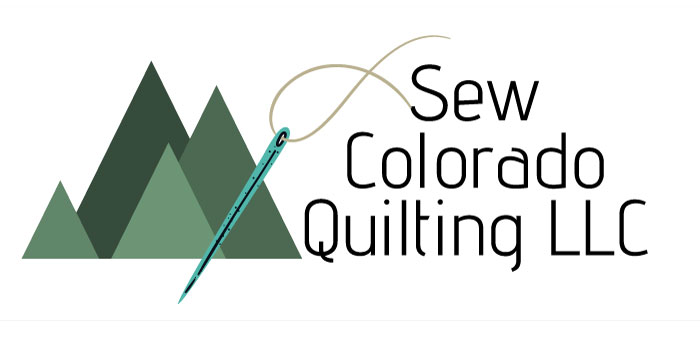The quilt backing isn’t nearly as much fun as the quilt top, but it doesn’t need to be overly complicated or time consuming. Here are some of my tips to make your quilt back a success.
What Kind of Fabric Are You Considering?
- If you’re considering cotton, the usable fabric width (WOF) will be 40”-44”. Some Kona Cottons are around 60”, but wide backing runs about 108”. Wide backing is more expensive, but there are a lot of great designs available and it saves you from having the piece anything.
- What about bed sheets? Yes, I’ve quilted many quilts with a sheet for the back. There are a lot of beautiful vintage sheets that could be used for a quilt back or flat sheets are very inexpensive. One of my clients almost exclusively uses these Target flat sheets for quilt backs and they’ve always turned out great! They’ll often go on sale for 20% off which is a much cheaper option than wide back fabrics, but you are much more limited since they only have a handful of solid colors.
- Please note that for quilt backs you don’t want a high thread count, it is difficult for the needle the pierce through them. 300 count seems to work well and once it’s washed, it crinkles up and is really soft. If you decide to use a sheet, please remove the hemmed edges and make all the edges straight. I can’t load the sheet on the frame with hems and uneven edges.
- Want a Minky back? I can do that! The average width is 58”-60” wide. Extra wide minky is available and is about 88” wide. I’ve quilted a pieced minky back before too! Be sure to make at least a ½” seam when connecting minky for the backing and understand that you will be able to notice extra thickness at the seam. I’ve also quilted fleece which has a very similar result as minky.
- Flannel is another option for quilt backs, but it does shrink much more than quilting cotton so it’s important to prewash it.
How Big Should the Backing Be?
- Your backing must be at least 3” larger on all sides than the quilt top, which means an extra 6″ for both the length and width. This is important because extra room is needed for clamps while on the frame and for the quilt design that extends beyond the pieced top.
- If your backing isn’t a total of 6” larger in width and length, I’ll contact you about options to add additional fabric to the backing. If you wish for me to correct the issue, there will be a $15-$25 additional charge depending on what needs to be done.
How Are You Going to Sew Your Backing Together?
- Use a ½” seam to sew the yardage together and press the seam OPEN! This will give you a much stronger seam than a ¼” seam. Pressing the seam open will reduce the bulk of the seam on the back.
- Remove selvages! Selvages are a tighter weave and will cause puckering on the back of the quilt.

- The best results for a pieced backing are with horizontal seams. (The lighter blue diagram above.) Vertical seams can act like selvages and cause some puckering. If vertical seams cannot be avoided, that’s ok! It just takes a little more care when advancing the quilt during the quilting process.
What Else Do I Need to Know?
Your backing fabric can be as simple as a solid, flat sheet, or it can be more elaborately pieced. I’ve seen some great quilt backs where people have used up orphan blocks or used up their yardage fabric stash. However, if you are going to piece the back there are a few things to remember.
- Make sure you indicate if there is a top. The easiest way would just be to safety pin a note on the top.
- I cannot guarantee that the quilt top and backing will be centered. Also, since the backing needs to be larger, I cannot guarantee things around the edges won’t be cut off.
If you have any ideas for a quilt back that you’re unsure about, just send me an email and we can talk about it.




0 Comments